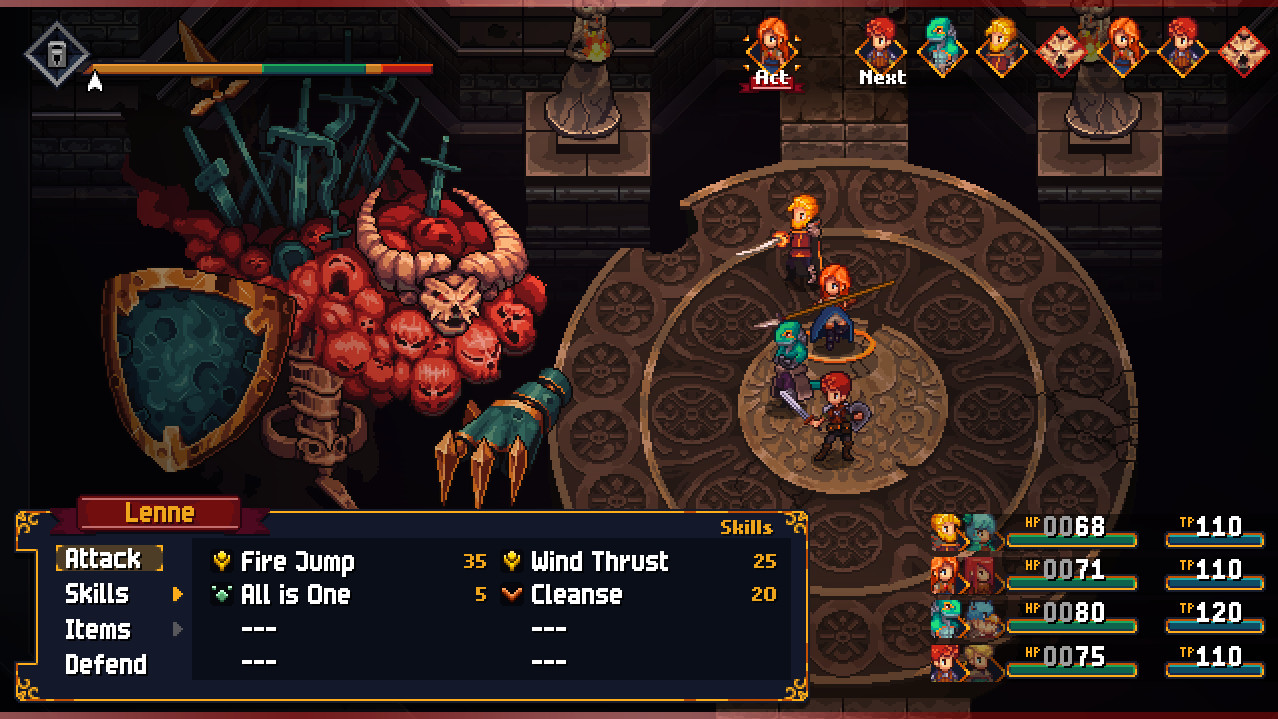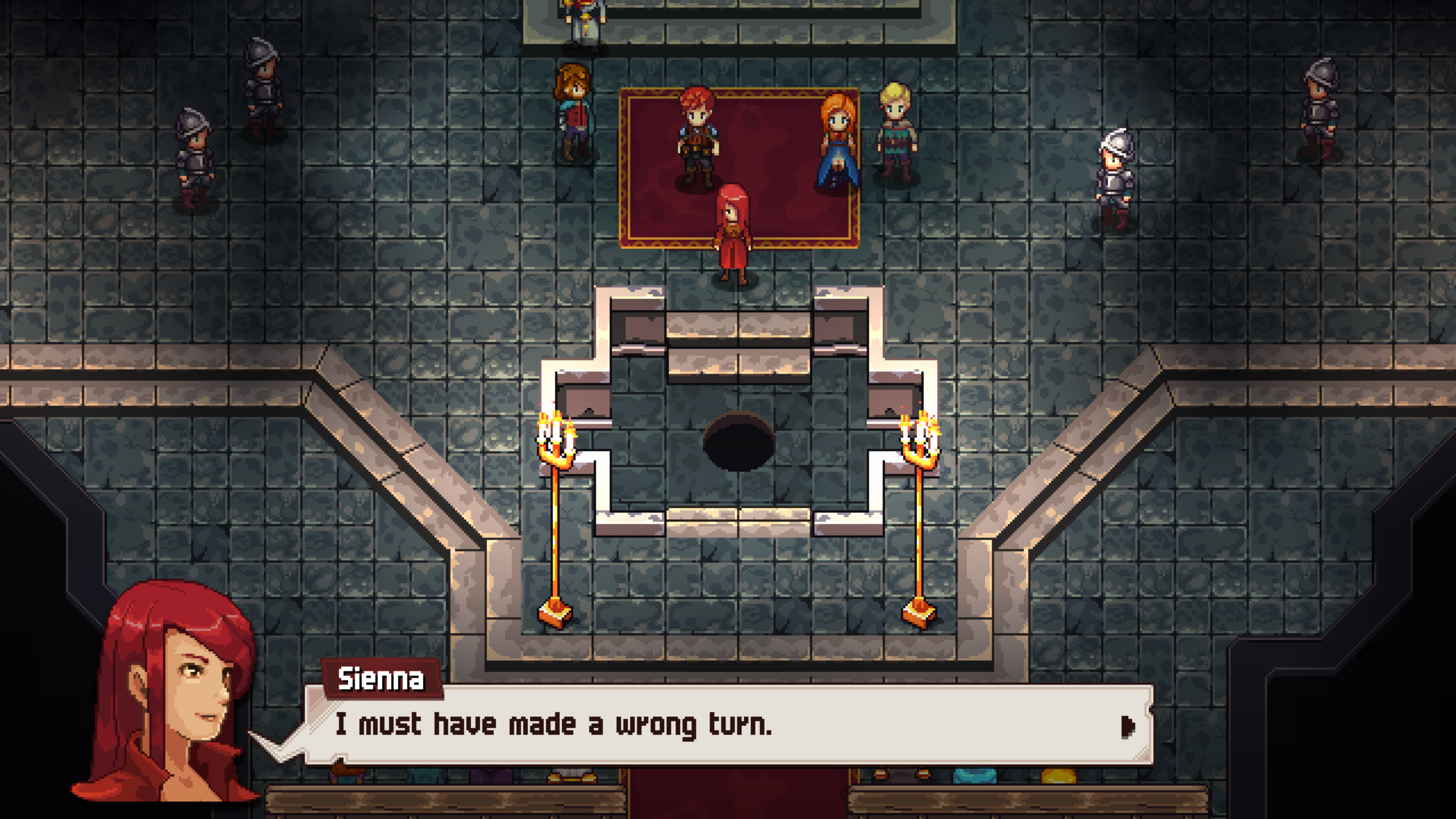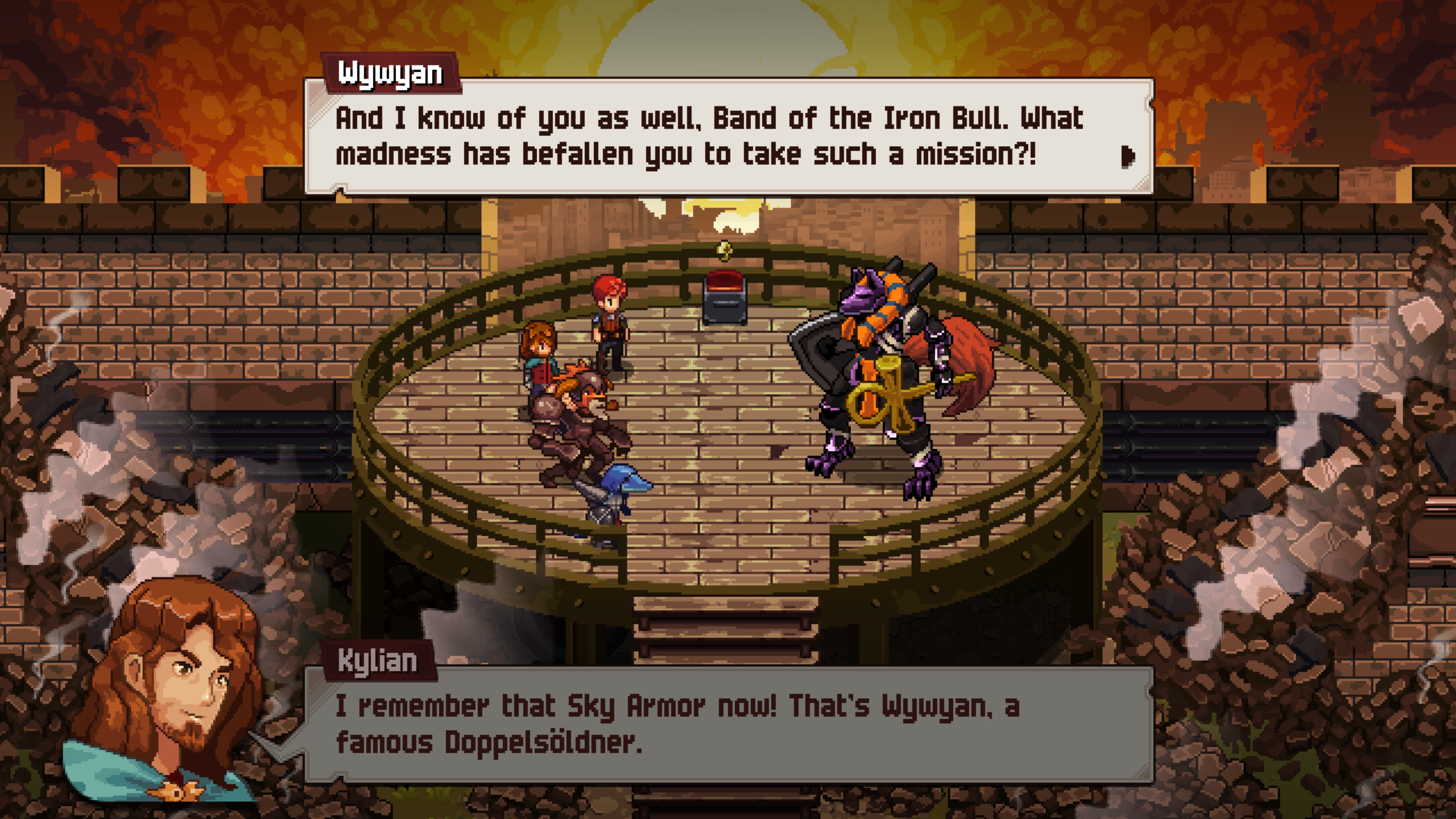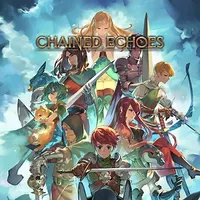Windows Central Verdict
Valendis is a beautifully pixelated world with a rich history in this story-driven RPG. The initial introductions drag on a bit long, but once the story picks up it pays off in the end. Chained Echoes manages to introduce useful mechanics to its combat with the Overdrive system that work with the player while challenging them to change up their gameplay and strategy at the same time while still affording plenty of room for customization and accessibility.
Pros
- +
Beautiful pixel art
- +
Approachable turn-based game play
- +
Overdrive mechanic
Cons
- -
Early character introductions drone on too long
Why you can trust Windows Central
If you’re familiar with Xbox in any capacity, you’ve probably heard at least one person claim that the console’s storefront is void of JRPGs. While there are certainly larger JPRG titles that have a tendency to skip the platform there really is no shortage of indies in the genre that can fill the void. Chained Echoes is one such title, and this love letter to the classic 16-bit JRPG of the SNES days has just launched not only on Xbox but as part of Xbox Game Pass and PC Game Pass along with Play Anywhere functionality.
Chained Echoes — Story and Gameplay
Chained Echoes — developed by Matthias Linda and published by Deck13 —puts players in control of a party of up to 8 characters each with their own strengths, weaknesses, and synergies as they travel about the beautiful but turbulent world of Valendis. The various factions and families of Valendis have been embroiled in a bitter and bloody war for as long as anyone can remember, but an effort to bring peace to the land is put in motion early in the prologue. However, not everybody agrees that peace is the ideal option, while others still may believe that peace can not be obtained due to the corrupt governance currently in place. Some that hold those opinions may even find themselves amongst your party. This leads to a compelling narrative that really leans into the gray morality of its large cast of characters.
With regard to gameplay, Chained Echoes wears its 16-bit SNES influence on its sleeve. Players can guide pixelated sprites of their party throughout a sprawling overworld map in order to explore a variety of towns, forests, sewers, caves and more locations. Players are able to explore the interiors of houses to find useful items like potions and armor hidden around on various shelves and tucked away in treasure chests. Unlike a lot of retro JRPGs, however, players do not have to worry about randomly stumbling into combat while they’re exploring the overworld unless they actually intend to engage with an enemy. All enemies are represented clearly on the screen instead of being invisible or launching surprise attacks, and players must interact with them first before entering combat. Additionally, players can adjust the frequency with which enemies appear in the overworld via Chained Echoes’ settings menu.

Chained Echoes falls back on classic turn-based combat for its battle sequences with players in control of a party of characters, each with their own skill sets and magic abilities. The enemies will appear on one side of the screen, with the player on the opposite side. A bar on the top right corner of the screen keeps track of whose turn it currently is to act and in what order characters will act. Each character has a simplified attack skill which I found surprisingly little use for, as well as magic spells that use a mana-like metric resource known as TP. There are also options for using items or taking a defensive stance. Where Chained Echoes takes a turn for the unusual is with the Overdrive mechanic, however.
On the top left of the screen, players will find the Overdrive bar. Mostly yellow, the bar will feature a segment of green as well as a segment of red and it is up to players to strategically make moves that keep the bar hovering in the green segment. When the Overdrive segment is aligned properly the playable characters are properly synergized, allowing for more effective movement in battle. This makes the character’s attacks and spells more potent and apt to more damage. However, should the Overdrive bar hover in the red the player’s attacks could be even less effective than normal. Most actions taken during combat will increase the OVerdrive bar’s position, including attacks and spells. Defensive actions can lower the bar away from the red segment, as well as swapping out party members for their assigned partner.

JRPGs often rely on some sort of unusual gimmick to help differentiate combat, especially when it is reliant upon a turn-based system. Oftentimes these are seen as fusions or some other special metric that justifies the player being given a boost in damage just because they can. Similarly, because these mechanics often lay on the cusp of feeling like gimmicks more than gameplay they feel easy to ignore. Astria Ascending had this issue with its Focus system, wherein I played the entirety of the campaign without ever using it’s focus once. The mechanics can feel bloated. However, Chained Echoes’ Overdrive mechanic never really overstays its welcome. It’s present for every battle, and pushing your team to stay in the red can have disastrous consequences for your fight. It forces the player to consider their movement more carefully, as well as to try out mechanics like character swapping rather than just working with who shows up on the battlefield each match.
Chained Echoes — Should you buy it?

While all of the hallmarks of a classic JRPG are present in Chained Echoes, the game doesn’t hesitate to offer modern conveniences to the player. Mini games like turtle races, modern quality of life improvements like auto saves and accessibility features make the game much more approachable than other heavier JRPGs. That said, the game fills a void in the niche with its rich and entertaining narrative and boasts easy to play but tough to master combat mechanics. There may be a few too many characters to keep track of overall, but the general foundations of a good story are there and Chained Echoes will most likely be able to hold your attention to the end. For those players with ingrained nostalgia for classic SNES JRPGs, Chained Echoes is an absolute must have title. However, even players without that nostalgia hit factor can still jump into the game and find themselves immersed in the battle for Valendis.
All the latest news, reviews, and guides for Windows and Xbox diehards.
Xbox Game Pass subscribers who are still on the fence as to the merits of Chained Echoes can pick up the game to play at no extra cost on both their Xbox Series X|S console or gaming PC. Chained Echoes is an Xbox Play Anywhere title, so players can even swap between multiple devices and their cloud save will be synced for continued play, further adding to the game’s pick up and play approachability.
Chained Echoes
Join a cast of unlikely heroes as they are forced to fight together once the promise of peace for the war-torn world of Valendis becomes threatened by corruption and chaos in this gorgeous pixel turn based RPG inspired by classic SNES games.
Available now: Xbox

Cole is the resident Call of Duty know-it-all and indie game enthusiast for Windows Central. She's a lifelong artist with two decades of experience in digital painting, and she will happily talk your ear off about budget pen displays.


